| |
|
|
|
back to Cessna 407 main |
 |
About designing the Cessna 407
 |
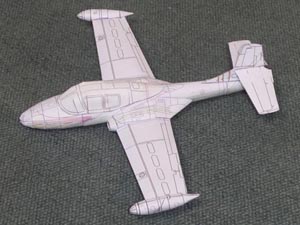 |
 |
The only full test build. Note the stripes of the Tweet bicentennial version on the nose.
 |
|
As in real life, the Cessna 407 was developed using most parts of the Cessna T-37, my model certainly benefitted from the same technique. Similar as with the Lavochkin La-7, only slight changes were necessary to create the 407.
This is also why most test builds comprised only of the fuselage and one engine section. The prolonged fuselage was easy to do by merely stretching the central part. The cabin section to replace the canopy was somewhat more tricky and required a number of revisions.
The slight bend in the wings leading edges had to be removed and a new, rounded engine intake had to be created. Designing the intake proved to go unexpectedly smooth, with only the addition of the (optional) FOD blinds causing some trouble - mostly to get the lines aligned to be horizontal in the end.
 |
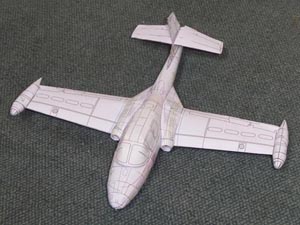 |
 |
The only full test build from the front. On the left side of the nose, the eye of the Thai Sharkmouth version can be seen. Note how the tip tank on the port side is upside down, because its actually the starboard tip tank
 |
|
 |
Another interesting aspect of designing the 407 was the addition of the optional radar bulge for the nose. I first created it to be longer, and then shortened it to fit. For the final test build, I had to build a full 407 at least once, to make sure, that the engine section with new intake worked on both sides, as the T-37 model design had the difficulty to get the engine section right on both sides. The tip tanks for this test builds could be reused from earlier T-37 test builds. As these test builds were always of the starboard tip tank, I simply put one of them upside down on the port side to have a complete 407.
In contrary to my discontent with the Tweet, I was very pleased with the 407, which later also sparked my appreciation of what I had achieved in the creation of the Tweet.
The Cessna 407 test builds were also used to create additional versions for the tweet. The 407 testbuilds had lines for the Bicentennial version, the Thai Sharkmouth version and the late Sherdils verision. Incidently I forgot adding an important line for the 407 prototype, which I then added in to the second Versions Master of the Tweet.
The 407 also had a Versions Master, which is a full model sheet with details and numbers, which still has all liveries in them. In fact the various fantasy versions I created for the 407 were based on several sets of lines to create the stripes and fill edges. It was fun to come up with ideas to get as many versions out of a few lines as possible.
Some were based on actual liveries of comparable early business jets, such as Learjet, Cessna Citation and Rockwell Sabreliner.
 |
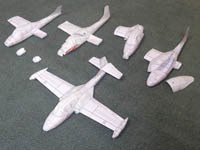 |
|
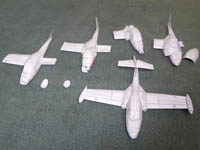 |
 |
|
|
| All surviving test builds |
|
|
| |
|
|
|
A huge part of the development of the Cessna 407 was to create the cabin interior. Basically only the panel could be taken from the Tweet, but only because I did not know how exactly the panel looked like. But it seems reasonable to believe that the panel largely resembled the Tweet's to allow those who learend on the Tweet to fly the 407 easily. However joysticks had to be replaced by yokes and the seats had to be redone. Another complication was that the longer cabin interfered with the wing stiffener box. This meant that I had to cut down the cabin tub and the wing stiffener each, so they could fit in the same fuselage.
It is unfortunate that little of the cockpit can be seen on a final model, yet it was done with the same love of details as previous cockpits.
 |
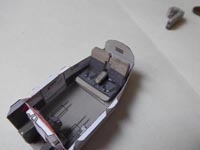 |
|
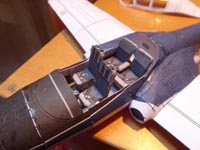 |
 |
|
|
| The cockpit as built for the demo build |
| |
|
|
|
| |
When the model was finished I actually built the Cessna 407 demo build before I built the Ecuadorian A-37 demo build, because the people I enlisted to build the Tweet were working on that and I needed to make sure to get a demo build of the Cessna 407.
It's not a model that anyone is waiting for, as most people are probably even oblivious of the existence of this nice little airplane, but it's nevertheless a welcome addition to the stahlhart aircraft fleet and I hope it will find some happy modelers to be appreciated by. |
| |
| |
| return to top |
| |
|
|
|
